Introduction
In the realm of culinary arts, the combination of ingredients often holds the key to creating dishes that tantalize the taste buds and leave a lasting impression. One such delightful pairing is the marriage of river shrimp and eggs in a stir-fry. This dish, though seemingly simple, requires a delicate balance of flavors, textures, and cooking techniques to achieve its full potential. Whether you’re a seasoned chef or an enthusiastic home cook, mastering how to cook river shrimp with eggs can elevate your culinary repertoire to new heights. This comprehensive guide will walk you through the process, from selecting the freshest ingredients to perfecting your stir-fry technique, ensuring that your final dish is nothing short of exquisite.
Chapter 1: Understanding the Ingredients
1 River Shrimp: The Heart of the Dish

River shrimp, known for their delicate flavor and tender texture, are a cornerstone of many Asian cuisines. Unlike their larger, saltwater counterparts, river shrimp offer a subtler, sweeter taste that complements a wide range of ingredients. When choosing river shrimp for your stir-fry, look for those that are firm, moist, and have a slightly translucent appearance. Fresh shrimp should have a mild, slightly sweet aroma, with no hint of ammonia or fishiness.
It’s crucial to buy shrimp that has been recently caught or harvested, as freshness is paramount. If purchasing frozen shrimp, ensure they were frozen at their peak of freshness and have been properly stored. Thaw frozen shrimp in the refrigerator overnight or under cold running water, never at room temperature, to prevent bacterial growth.
2 Eggs: The Binding Agent
Eggs play a dual role in this dish: they add richness and creaminess while also serving as a binding agent that ties all the flavors together. For the best results, use large, free-range eggs. Free-range eggs tend to have a richer flavor and more vibrant yolk color due to the hens’ diet and lifestyle.
When selecting eggs, check for cracks or discoloration on the shell. Fresh eggs will have a slightly matte finish and will sink to the bottom of a bowl of cold water when placed therein. Avoid eggs that float, as this can indicate they are older and may have lost some of their freshness.
3 Seasonings and Aromatics
The beauty of stir-fries lies in their ability to pack a punch of flavor into a relatively simple dish. Essential seasonings for this recipe include salt, pepper, garlic, ginger, and soy sauce. Garlic and ginger provide a aromatic base, while soy sauce adds depth and umami. A touch of sesame oil can also be used to enhance the dish’s fragrance.
For additional complexity, consider incorporating green onions, bell peppers, or even a splash of rice vinegar. These ingredients not only add color and texture but also contribute to the dish’s overall harmony of flavors.
Chapter 2: Preparation Techniques
1 Preparing the Shrimp
Begin by peeling and deveining the shrimp. This step not only removes any grit or impurities but also ensures a cleaner, more pleasant eating experience. To peel the shrimp, grasp the shell at the tail end and gently pull it toward the head, removing it in one piece. Use a sharp knife to make a shallow cut along the back of the shrimp and remove the dark intestinal tract with the tip of the knife or a toothpick.
Once peeled and deveined, rinse the shrimp under cold running water and pat them dry with paper towels. Excess moisture can cause the shrimp to steam rather than sear, resulting in a less than optimal texture.
2 Preparing the Eggs
Crack the eggs into a bowl and beat them lightly with a fork or whisk until the yolks and whites are fully combined. Avoid over-mixing, as this can cause the eggs to become too frothy and lose their tender texture when cooked.
Season the eggs with a pinch of salt and a dash of pepper. For an added touch of luxury, you can incorporate a splash of heavy cream or milk, which will make the eggs even creamier and more indulgent.
3 Preparing the Aromatics
Mince the garlic and ginger finely. The smaller the pieces, the more evenly their flavors will distribute throughout the dish. Slice green onions diagonally into thin pieces to add both color and a mild onion flavor. If using bell peppers, cut them into thin strips or dice them, depending on your preference.
Chapter 3: Cooking Techniques
1 Heating the Pan and Oil
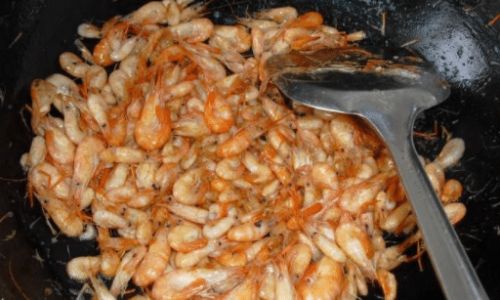
The key to a successful stir-fry is a hot, well-seasoned pan. Preheat your pan over medium-high heat until it is very hot. Add a tablespoon or two of oil—vegetable, peanut, or sesame oil are all good choices—and let it heat up until it shimmers but not smokes. A hot pan ensures that the shrimp and eggs will sear beautifully, locking in juices and flavors.
2 Stir-Frying the Shrimp
Add the shrimp to the hot pan in a single layer, avoiding overcrowding. This allows for even cooking and prevents the shrimp from steaming. Sear the shrimp for about 1-2 minutes on each side, or until they turn pink and opaque. Be careful not to overcook them, as they will continue to cook slightly from residual heat.
Remove the shrimp from the pan and set them aside on a plate. This two-step cooking process ensures that the shrimp remain tender and juicy while the eggs cook separately, preventing them from becoming overcooked or rubbery.
3 Stir-Frying the Aromatics and Eggs
In the same pan, add a bit more oil if needed and sauté the minced garlic and ginger until fragrant, about 30 seconds to 1 minute. Be careful not to let them burn, as this will make the dish bitter.
Add the beaten eggs to the pan, stirring gently with a spatula or wooden spoon. Allow the eggs to set slightly before gently folding them, creating soft, fluffy curds. Once the eggs are mostly cooked but still slightly runny, return the shrimp to the pan.
4 Combining Ingredients and Finishing
Add any additional vegetables, such as bell peppers or green onions, to the pan and stir-fry for another minute or two until they are tender-crisp. Season the dish with soy sauce, adjusting the amount to taste. A little goes a long way, as soy sauce can quickly overpower other flavors.
If desired, drizzle a teaspoon of sesame oil over the dish at the end for an extra layer of fragrance. Stir everything together gently until heated through and well combined.
Chapter 4: Serving and Enjoying
Transfer the stir-fried shrimp and eggs to a serving dish, garnishing with additional green onions or a sprinkle of sesame seeds for added color and texture. Serve immediately while hot, as the dish’s flavors are best appreciated when fresh.
Pair this dish with a side of steamed rice, noodles, or even a simple green salad. The combination of tender shrimp, creamy eggs, and aromatic seasonings makes for a meal that is both satisfying and elegant.
Conclusion
Mastering how to stir-fry delicious eggs with river shrimp is a rewarding culinary endeavor that can elevate your home-cooked meals to restaurant-quality standards. By paying attention to ingredient selection, meticulous preparation, and precise cooking techniques, you can create a dish that is not only visually appealing but also bursting with flavor.
Remember, the art of stir-frying lies in balance: not overcooking the ingredients, using high heat to sear and lock in flavors, and seasoning thoughtfully to enhance rather than mask the natural tastes of the shrimp and eggs. With practice and patience, you’ll soon find that this simple yet sophisticated dish becomes a staple in your kitchen, delighting family and friends alike.
Bon appétit!
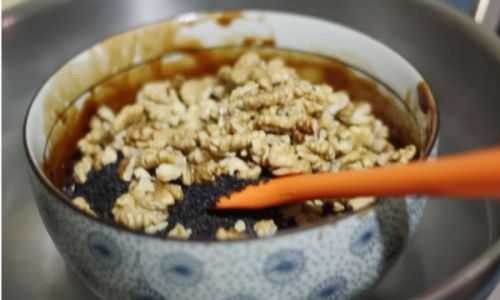

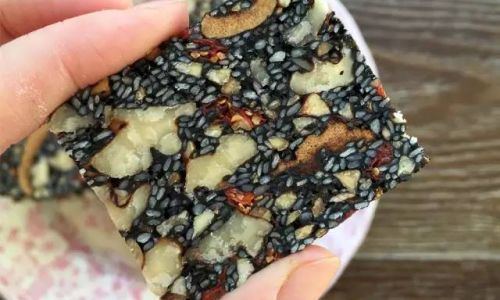
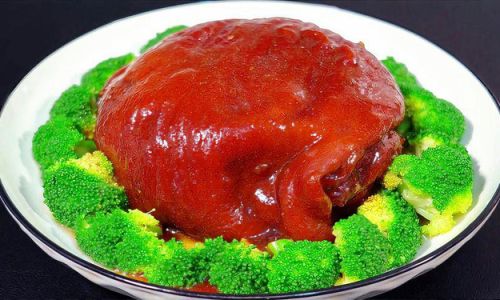
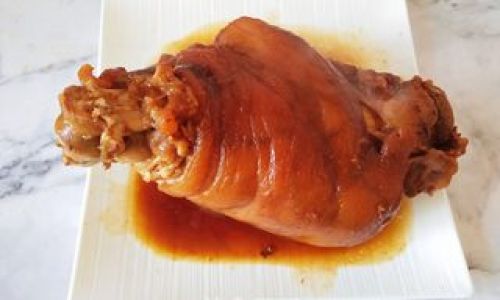
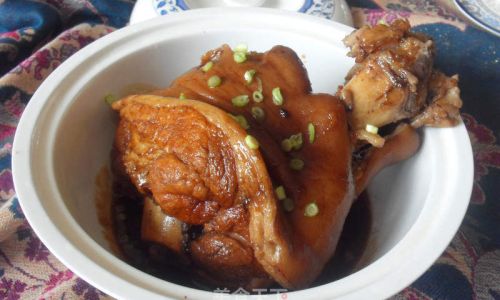
0 comments